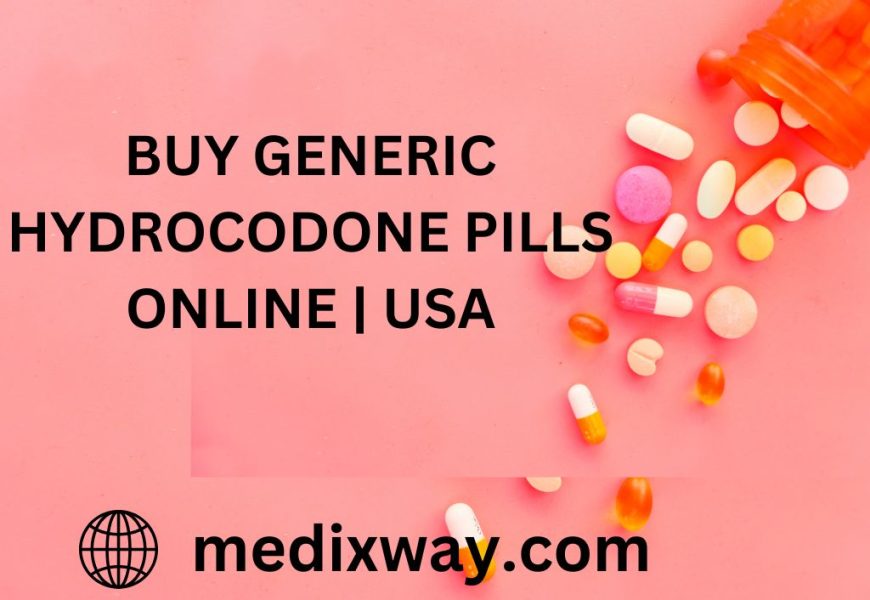The opioid prescription medication is Generic Hydrocodone Online Pills manufactured for pain. Acetaminophen is used to relieve pain and reduce fever in patients. Hydrocodone Online management and acetaminophen combination is used to relieve pain severe enough to require opioid treatment and when other pain medicines do not work well enough or cannot be tolerated. Hydrocodone has been used as a cough suppressant although this has largely been replaced by dextromethorphan in current cough and cold formulations. Hydrocodone Online pillworks on narcotic receivers in the spinal cord and the brain and is utilized to alleviate mild to serious pain that does not heed less powerful pain-relieving drugs. Acetaminophen is a pain reliever and fever reducer that works by changing how the body senses pain and cooling the body down. Hydrocodone Acetaminophen is over-the-counter in brands such as Tylenol, Paracetamol, and Panadol.
Chemical Composition and Formulations
Hydrocodone is generated from codeine, a naturally occurring chemical present in the opium poppy. It is chemically changed to produce a more potent molecule than codeine and has a higher pain reduction efficacy. Hydrocodone, in its pure form, is a white, odorless powder. However, it is most usually used in combination with other medications such as acetaminophen, ibuprofen, or homatropine to improve its therapeutic properties.
Common formulations of hydrocodone include:
Combination tablets: These frequently mix hydrocodone with acetaminophen (e.g., Vicodin) or ibuprofen (e.g., Ibudone).
Cough syrups contain hydrocodone, which is frequently mixed with additional substances such as homatropine to reduce coughing.
Extended-release formulations are intended to give long-term pain relief by assuring a consistent release of the medicine throughout time.
Mechanism of Action
Hydrocodone acts as an op for mu-opioid receptors in the brain and spinal cord. These groups of cells are part of the body’s pain relief system. This medicine relieves pain by attaching to these cell groups and inhibiting the transmission of pain signals. Opioids like hydrocodone increase the release of dopamine, are linked to feelings of pleasure and reward. This contributes to the pleasure that often comes with opioids.
Side Effects of Hydrocodone:
1. Drowsiness and Sedation
Hydrocodone is a central nervous system (CNS) depressant, which frequently induces sleepiness or sedation. Patients may feel particularly tired, lethargic, or less attentive after taking the medicine, impairing their ability to drive or other duties that require concentration and coordination.
2. Dizziness
Many patients suffer dizziness or lightheadedness, particularly when standing up suddenly. This is due to hydrocodone’s blood pressure-lowering impact, which can make it difficult for the body to adapt to changes in posture.
3. Nausea and vomiting.
Hydrocodone and other opioids can irritate the gastrointestinal tract, causing nausea, vomiting, and stomach distress. These symptoms occur more frequently when the medicine is first begun or when the dosage is increased.
4. Constipation
One of the most common opioid side effects is constipation. Hydrocodone reduces gastrointestinal motility, which can cause difficulties passing stools, infrequent bowel motions, and abdominal discomfort. Long-term use can cause chronic constipation, which may necessitate further therapy.
5. Dry mouth.
Hydrocodone can inhibit saliva production, causing a feeling of dry mouth. This can make swallowing difficult and may raise the risk of oral problems such as cavities or gum disease if not treated.
6. Sweating
Increased perspiration or light sweating is a somewhat typical side effect of using hydrocodone. This could be accompanied by additional symptoms such as feeling warm or flushed.
7. Headache
Some people may have headaches as a side effect of hydrocodone, especially when they first start taking it or when the dosage is raised.
8. Itching
Itching, which is commonly caused by opioid-induced histamine release, can occur when using hydrocodone. It is usually moderate, but in certain circumstances, it can be irritating.
Overdose and Treatment
Hydrocodone overdose is a major medical emergency that can result in death if not addressed immediately. Overdose symptoms may include the following:
- Severe sleepiness or unresponsiveness
- Slow or shallow respiration
- Lack of oxygen can cause bluish skin or lips.
- Pinpoint pupils.
- Loss of consciousness.
- If you suspect an overdose, get emergency medical treatment. Naloxone (Narcan) is an antidote for opioid overdose that works by attaching to opioid receptors in the brain and restoring respiratory depression. Naloxone is available in injectable and nasal spray versions, and it is increasingly being carried by first responders, family members, and people in danger of overdose.
CONCLUSION
Hydrocodone is a strong opioid that is used to treat pain and suppress coughs. While it is successful in treating these symptoms, its potential for abuse, dependency, and overdose raises concerns. Healthcare practitioners must carefully balance the benefits and hazards of hydrocodone, and patients must strictly adhere to their prescriptions to avoid negative consequences. Efforts to tackle the opioid epidemic include tougher regulations and increased education about the dangers of hydrocodone and other opioids.













